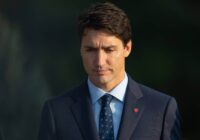President López Obrador has the opportunity to implement the USMCA in a better way than the Salinas and Peña Nieto administrations did.
At the beginning of 2018, it seemed that a US withdrawal from the North American Free Trade Agreement (NAFTA) was both possible and likely. US President Donald J. Trump’s critical stance against NAFTA was aimed at renegotiation, and by November 2018 talks secured a continuation of trade under a new, and most uninspired, title: the United States-Mexico-Canada Agreement (USMCA), which closely resembles the original deal.
Neither Canada nor Mexico wanted to renegotiate NAFTA, signed nearly a quarter century ago in 1994. When, first as a candidate and then as president, Donald Trump vocally expressed his dislike for the trilateral pact, labeling it “the worst trade deal ever made,” he vowed to pursue a new agreement that would be more favorable to the United States. As Trump’s candidacy consolidated, both Mexican President Enrique Peña Nieto and Canadian Prime Minister Justin Trudeau expressed their disagreement with the US point of view, continuing to voice their concern as Trump assumed office in January 2017.
As the US president’s criticism of NAFTA became more vocal, Mexico and Canada abandoned their separate positions and negotiating strategies and created a common front against Trump’s rhetoric. But, just as it occurred during the negotiation of the original NAFTA, Mexico reached an agreement with the US well before Canada. On the one hand, just like Canada, Mexico wanted to secure an agreement that maintained or preserved free trade with the United States. On the other hand, unlike its northernmost counterpart, Mexico also wanted to secure an agreement to ensure the continuity of the neoliberal economic agenda that had prevailed in the country for over three decades. Hence, despite initial reluctance to negotiate, Mexican diplomats agreed to and continued to take part in the “constructive and productive conversations” on NAFTA, even when these were neither constructive nor productive.
Striking Similarities
The similarities between the original agreement and the USMCA, and the objectives that the Mexican government pursued in both, are striking. Back in 1990, Presidents Carlos Salinas de Gortari and George Bush Sr. discussed and agreed to establish a comprehensive US-Mexico free trade agreement. Mexico’s interest in proposing and negotiating this agreement stemmed from the adverse economic situation that the country had been facing since the mid-1980s. To address it, the government looked to promote investment in the country by dismantling trade controls and opening the domestic market to foreign competitors. It was crucial for Salinas to liberalize Mexican trade with the US, given that it was the main source of foreign direct investment and already accounted for most of Mexico’s foreign trade.
The Salinas administration wanted to secure and implement NAFTA to complete its set of neoliberal reforms. All of these reforms were radical departures from the traditionally nationalistic policies that had constituted the backbone of the Mexican economy for over 40 years. During the decades known as the “Mexican miracle,” protectionism allowed small and medium-sized firms to compete on the domestic market. But such protectionism also led to a slower GDP growth rate, which eventually reached its lowest points in the 1970s and 1980s, causing a collapse of the system.
Jaime Serra Puche, then-secretary for trade and industrial promotion, argued that the Salinas administration was compelled to press on with these policies to ensure that economic protectionism, which had only resulted in low growth and hyperinflation of Mexico’s economy, would become a thing of the past.
Securing Continuity
Today, the logic for securing the continuation of NAFTA remains the same as in 1994. The decision of the Peña Nieto administration to renegotiate and secure the free trade agreement was resolute and decisive. The setting and deployment of Mexico’s negotiation strategy, along with the domestic economic policies guiding it, were not politically neutral. They were built upon the government’s ideological affiliation toward the management of the national economy, and especially the means for wealth creation and distribution. The way in which the neoliberal administration of President Salinas viewed the original NAFTA in the 1990s and President Peña Nieto’s saw its most recent renegotiation in the 2010s is remarkably similar.
Once the renegotiation of NAFTA was inevitable, Peña Nieto was interested in reaching an (ideally trilateral) agreement. But should that not be possible, Mexico’s priority was, once again, to secure a free trade agreement with the US. Peña Nieto was keen to achieve this outcome before December 1, 2018, when then-President-Elect Andrés Manuel López Obrador — the first leftist head of state in nearly 80 years — would take office.
In the view of the outgoing administration, it was urgent to both reach and sign a new agreement to ensure its continuity. The significant diplomatic effort made by Mexico in the run-up to December 1 was, therefore, an attempt at depoliticizing and maintaining the country’s economic policies (including its trade policy) to ensure the continuity of NAFTA — and neoliberalism. The continuity of a free trade agreement for North America under the USMCA is, therefore, a victory for Mexico’s trade diplomats, even more so than for Canada’s.
Just as it occurred in the 1990s, the reaching of an agreement between the Mexican and US negotiation teams in August put pressure on Canada to come (back) to the negotiating table and agree to the minimal changes that were made to the terms of its bilateral trade with the US. Had Mexico not already reached a similar agreement with the United States (just as it did back in 1993), it is likely that the northernmost party would have abandoned the negotiations altogether. Yet the reaching of a last-minute understanding between Canada and the US ensured the former’s continued participation in NAFTA and the continuity of the agreement for all sides.
A Better Deal
President López Obrador has the opportunity to implement the USMCA in a better way than the Salinas and Peña Nieto administrations did. Under the country’s neoliberal policies, Mexican firms and individuals in unprotected sectors of the economy such as agriculture were unable to compete with their North American rivals, and the Mexican economy suffered as companies closed down and unemployment increased. On average, the period from 1994 to 2000 saw a mere 2% economic growth across Mexico, with per capita GDP growing only 1% between 1994 and 2006.
As we get closer to the third decade of free North American trade, Mexico has the chance to reverse poverty through a more careful, fair and more equitable implementation of the new agreement. Mexico, its companies and its population could benefit from the USMCA through a better implementation of the agreement, namely by pushing for the three countries to address their social lacunae, especially in the areas of investment on cross-border infrastructure, co-operation on research and development, easier and safer transfer of financial resources of foreign workers across borders, as well as better mobility of workers across North America.
Should these gaps in the trilateral relationship be addressed, the new agreement has the potential of working better than its neoliberal predecessor. The record track of Mexican trade diplomacy shows that the country has managed twice to push its neighbors to reach new mutually beneficial agreements. The first leftist government of the 21st-century in Mexico has the chance to deliver these changes.
The views expressed in this article are the author’s own and do not necessarily reflect Fair Observer’s editorial policy.
Support Fair Observer
We rely on your support for our independence, diversity and quality.
For more than 10 years, Fair Observer has been free, fair and independent. No billionaire owns us, no advertisers control us. We are a reader-supported nonprofit. Unlike many other publications, we keep our content free for readers regardless of where they live or whether they can afford to pay. We have no paywalls and no ads.
In the post-truth era of fake news, echo chambers and filter bubbles, we publish a plurality of perspectives from around the world. Anyone can publish with us, but everyone goes through a rigorous editorial process. So, you get fact-checked, well-reasoned content instead of noise.
We publish 2,500+ voices from 90+ countries. We also conduct education and training programs
on subjects ranging from digital media and journalism to writing and critical thinking. This
doesn’t come cheap. Servers, editors, trainers and web developers cost
money.
Please consider supporting us on a regular basis as a recurring donor or a
sustaining member.
Will you support FO’s journalism?
We rely on your support for our independence, diversity and quality.






